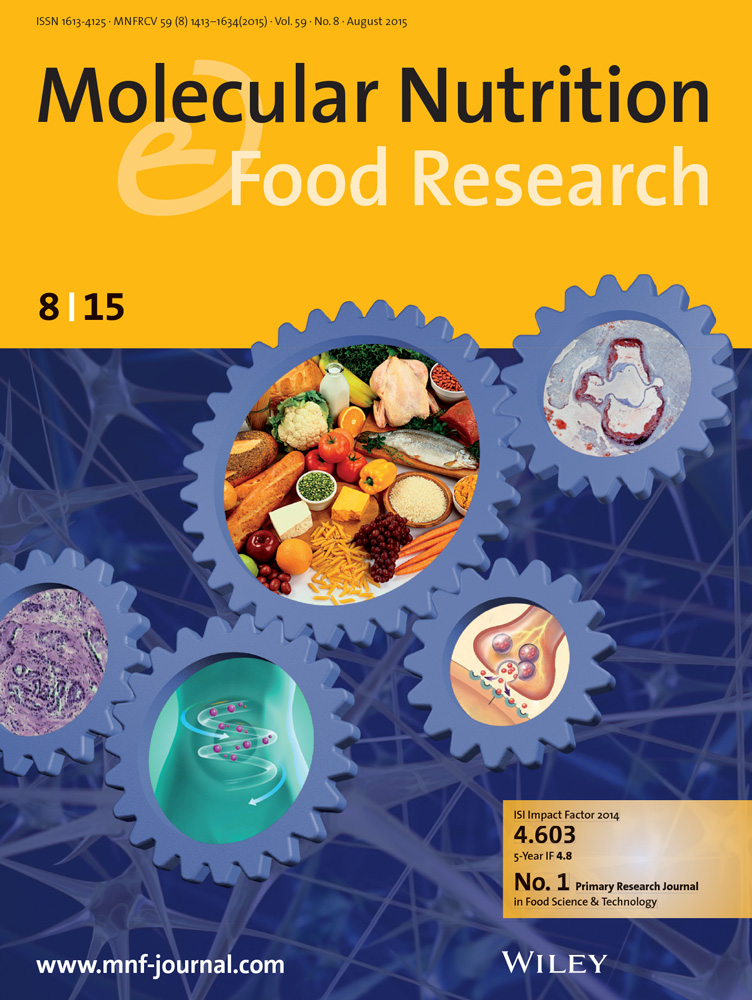槲皮素通过tas2r38介导的PLC信号通路促进肠内分泌l细胞GLP-1分泌
IF 4.5
2区 农林科学
Q1 FOOD SCIENCE & TECHNOLOGY
引用次数: 0
摘要
槲皮素(QC)是一种天然的类黄酮,通过促进胰高血糖素样肽-1 (GLP-1)的分泌来调节葡萄糖稳态。本研究探讨苦味受体TAS2R38和磷脂酶C (PLC)信号通路在qc诱导的肠内分泌NCI-H716细胞GLP-1分泌中的作用。分子对接显示QC与TAS2R38之间存在较强的结合。QC能显著增强GLP-1的分泌,而TAS2R38 siRNA和PLC抑制剂能减弱GLP-1的分泌。这些发现表明QC通过tas2r38介导的PLC信号通路刺激GLP-1的释放,为QC的降糖作用提供了一种新的机制。本文章由计算机程序翻译,如有差异,请以英文原文为准。
Quercetin Enhances GLP-1 Secretion via TAS2R38-Mediated PLC Signaling in Enteroendocrine L-Cells.
Quercetin (QC), a natural flavonoid, has shown potential in regulating glucose homeostasis by promoting glucagon-like peptide-1 (GLP-1) secretion. This study investigates the role of the bitter taste receptor TAS2R38 and the phospholipase C (PLC) signaling pathway in QC-induced GLP-1 secretion from enteroendocrine NCI-H716 cells. Molecular docking revealed strong binding between QC and TAS2R38. QC significantly enhanced GLP-1 secretion, which was attenuated by TAS2R38 siRNA and PLC inhibitors. These findings suggest that QC stimulates GLP-1 release through TAS2R38-mediated PLC signaling, offering a novel mechanism for QC's antidiabetic effects.
求助全文
通过发布文献求助,成功后即可免费获取论文全文。
去求助
来源期刊

Molecular Nutrition & Food Research
工程技术-食品科技
CiteScore
8.70
自引率
1.90%
发文量
250
审稿时长
1.7 months
期刊介绍:
Molecular Nutrition & Food Research is a primary research journal devoted to health, safety and all aspects of molecular nutrition such as nutritional biochemistry, nutrigenomics and metabolomics aiming to link the information arising from related disciplines:
Bioactivity: Nutritional and medical effects of food constituents including bioavailability and kinetics.
Immunology: Understanding the interactions of food and the immune system.
Microbiology: Food spoilage, food pathogens, chemical and physical approaches of fermented foods and novel microbial processes.
Chemistry: Isolation and analysis of bioactive food ingredients while considering environmental aspects.
 求助内容:
求助内容: 应助结果提醒方式:
应助结果提醒方式:


